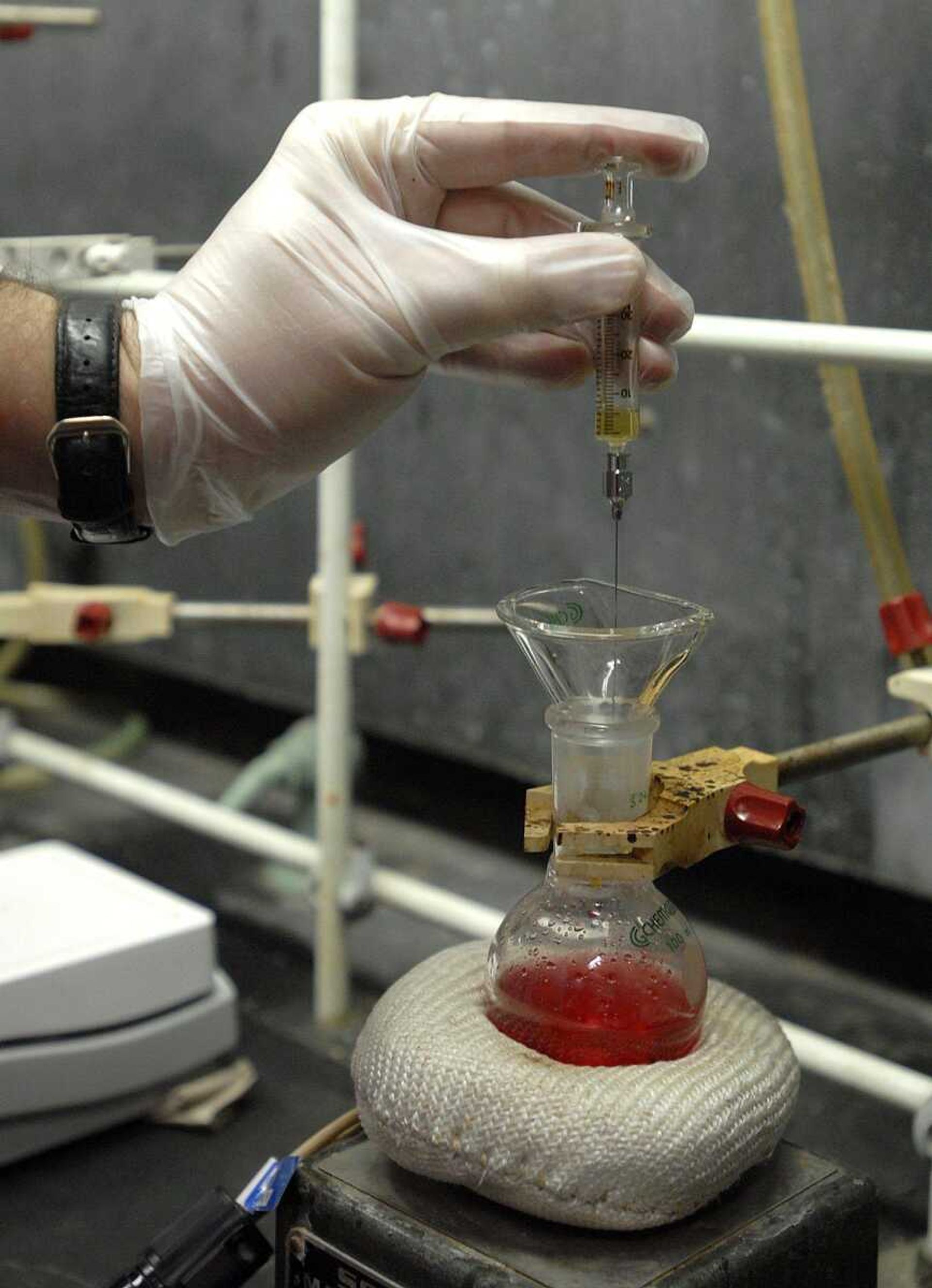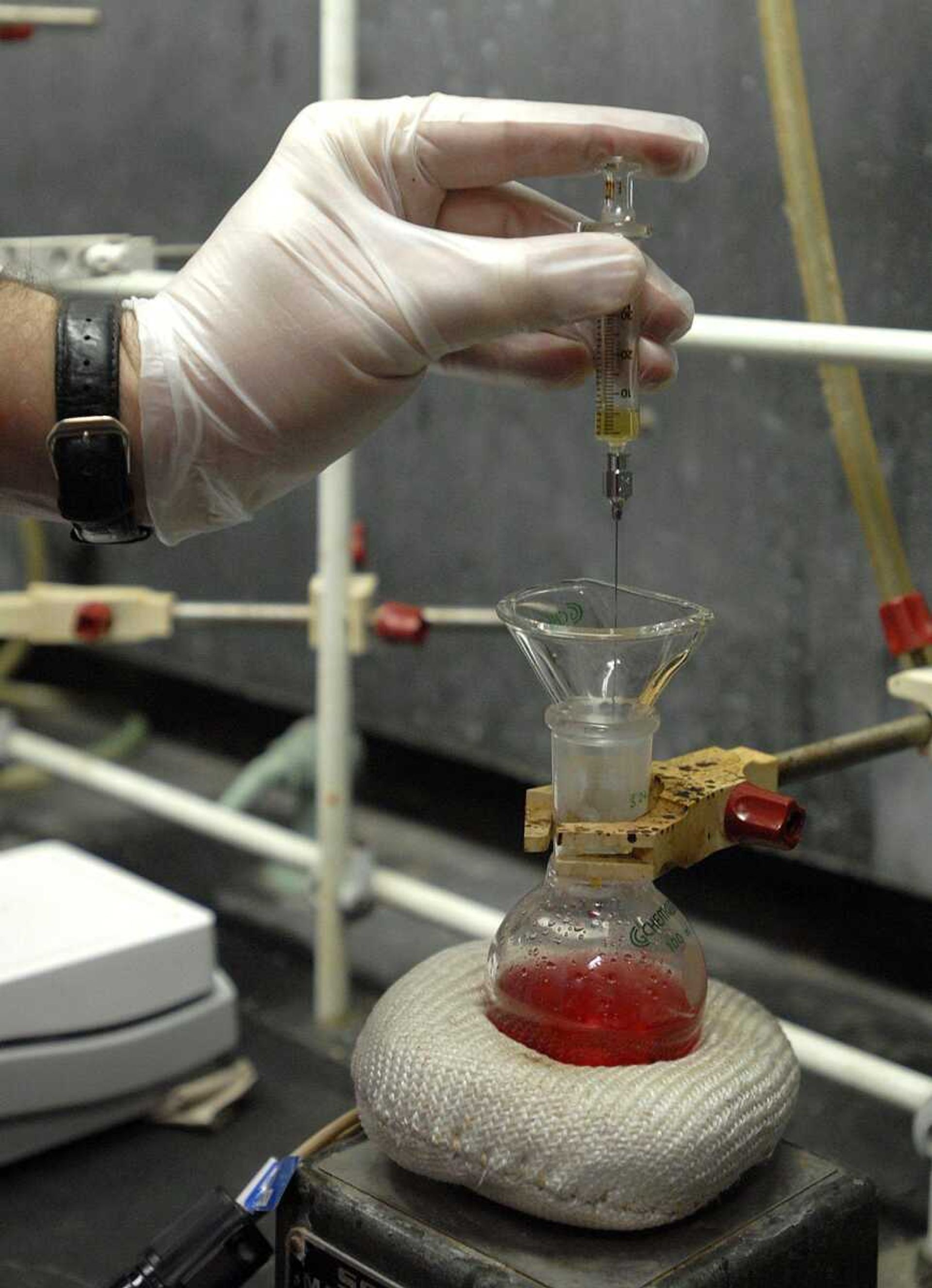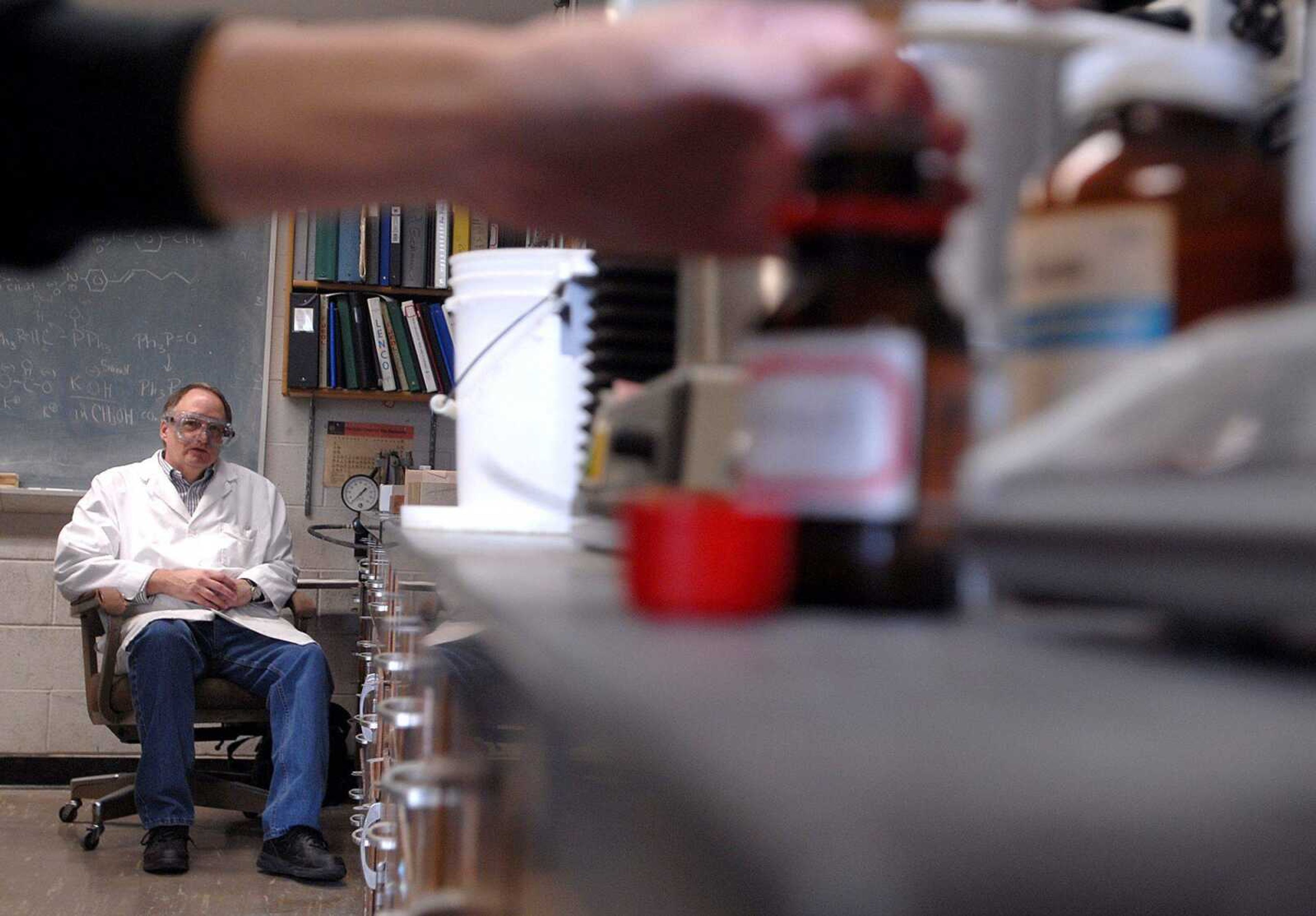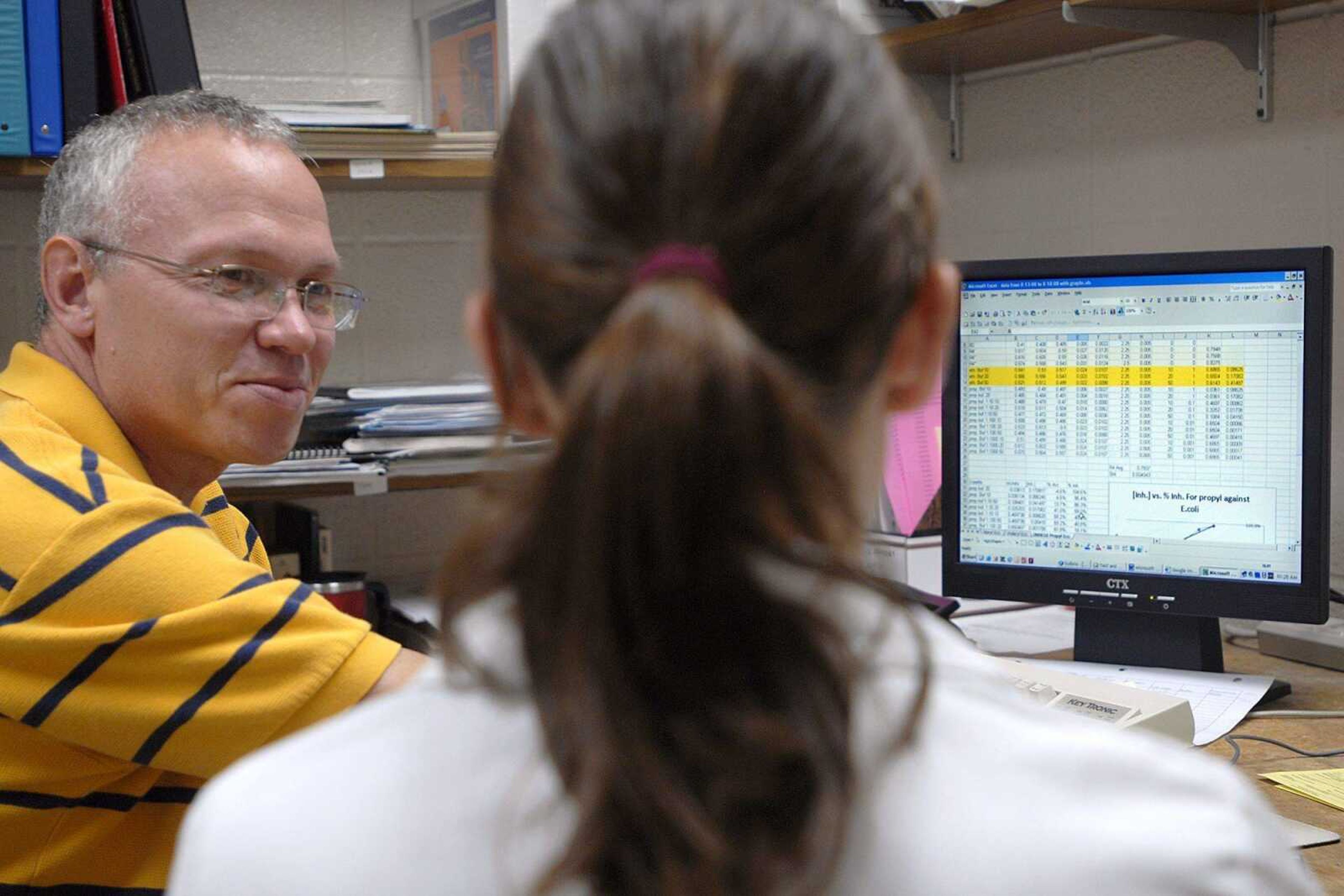Work on new antibiotics is drawing attention at Southeast
Community leaders often refer to Southeast Missouri State University as a "teaching institution," as the faculty's primary role is instruction. While faculty are encouraged to conduct research, widespread recognition of progress is infrequent. So when Dr. Ken Dobbins mentioned two professors' attempts to develop new medications during his presidential "State of the University" address, it drew attention...
Community leaders often refer to Southeast Missouri State University as a "teaching institution," as the faculty's primary role is instruction.
While faculty are encouraged to conduct research, widespread recognition of progress is infrequent. So when Dr. Ken Dobbins mentioned two professors' attempts to develop new medications during his presidential "State of the University" address, it drew attention.
Dr. Jim Champine and Dr. Bruce Hathaway are conducting drug research in the hopes of creating a more effective antibiotic. The research is necessary because over time certain bacterial infections have become resistant to antibiotics currently used.
"A number of compounds seem to be as effective as previously-used compounds," said Champine, an associate professor of biology. The two scientists' goal is to use the lowest concentration of a compound possible to effectively keep bacteria from growing.
A "breakthrough" drug could be years off, and the university is not in a position to market a drug. But Hathaway and Champine said their results -- positive and negative -- can help other researchers. They have both presented portions of their research at conferences. And a main benefit of the research is student participation and learning, they said.
"For our students, this is authentic research," Champine said.
Hathaway, a chemistry professor, first began the project in 1980 as a post-doctoral research assistant at Pomona College in California. He accepted a position at Southeast in 1982. Hathaway largely abandoned the research until 2003 when a student was looking for a project that would combine chemistry and biology. Champine agreed to collaborate.

"It started slowly, but it seems we're doing more and more as the years go on," Hathaway said.
The university requires experiential learning; both the biology and chemistry departments expect a student to design a project and conduct research. Since 2003, about 15 students have worked on the project.
Junior Carrie Lasky, a biomedical science major, spent about four days a week this summer taking compounds made by the chemistry department, mixing them with reaction materials and a purified E. coli enzyme, and running it through a machine that measures activity level.
The scientists are trying to inhibit the enzyme necessary to make folic acid, the lack of which would effectively inhibit a bacteria's growth.

For hours at a time, Lasky monitored the machine, a spectrophotometer. This semester, she is graphing and analyzing the results.
"It's been really good experience to research and get an idea of what it's like. I want to get my Ph.D. and become a geneticist, so I'll be doing lots of research," Lasky said.
In 2005, the university granted money for the project, but funding is running low. The project leaders are looking for more grant opportunities.
Both Hathaway and Champine were quick to point out that other professors are conducting meaningful research as well.

"We do what we do because we enjoy it and think it's worthwhile. Most in the college are doing the same thing," Champine said.
lbavolek@semissourian.com
335-6611, extension 123
Have a comment?

Log on to semissourian.com/today
Connect with the Southeast Missourian Newsroom:
For corrections to this story or other insights for the editor, click here. To submit a letter to the editor, click here. To learn about the Southeast Missourian’s AI Policy, click here.










